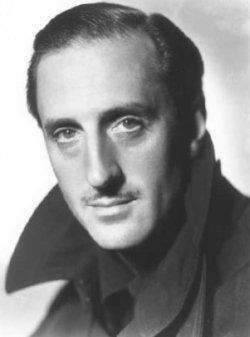 An actor with both one of the most distinctive profiles and most distinctive voices in Hollywood, Basil Rathbone became identified with Sherlock Holmes to his dismay. He should have taken more joy in the connection as few of his other lead roles have been remembered. He was in a large number of classic films, but, except for Son of Frankenstein, always as a supporting player and usually as a villain. It’s lucky for viewers that he made a superb villain. He was in some of the very best films ever made as the antagonist.
An actor with both one of the most distinctive profiles and most distinctive voices in Hollywood, Basil Rathbone became identified with Sherlock Holmes to his dismay. He should have taken more joy in the connection as few of his other lead roles have been remembered. He was in a large number of classic films, but, except for Son of Frankenstein, always as a supporting player and usually as a villain. It’s lucky for viewers that he made a superb villain. He was in some of the very best films ever made as the antagonist.
But before getting to those masterpieces, some honorable mentions—far more than normal if I counted separately some movies I’ve grouped together. First, a few cases where he excels but the film does not: Rathbone’s pre-code charmer in Sin Takes a Holiday (1930), his most psychotic villain in A Night of Terror (1937), and his comedic pick-pocket instructor in Heartbeat (1946). Then an honorable mention for the comedy Tovarich (1937), where Rathbone has only a small part. And a big honorable mention to his 14 Sherlock Holmes films, particularly The Hound of the Baskervilles (1939) and The Adventures of Sherlock Holmes (1939). And finally an honorable mention to The Court Jester (1955), a rollicking Swashbuckling comedy starring Danny Kaye. and #9 on the list below if the list went to 9.
#8 – A Tale of Two Cities (1935) — It does a passable job of translating a great novel for the screen, and while the directing is mediocre and several actors fail, Ronald Colman is excellent. Rathbone is very good in a small role. [Also on the Ronald Colman list]
#7 – If I Were King (1938) — A witty costume comedy/drama that is really a series of brilliant conversations between Ronald Colman (as a roguish poet) and Rathbone (as the king). [Also on the Ronald Colman list]
#6 – Son of Frankenstein (1939) A surprisingly good third entry in the franchise. It is seeped in German expressionism. Karloff gets a reduced role; Rathbone is the lead, but Bela Lugosi steals the film in what is probably his best performance. (My Review) [Also on the Bela Lugosi list and the Boris Karloff list]
#5 – The Dawn Patrol (1938) — One of the finest war pictures, with Rathbone, David Niven, and Errol Flynn as WWI pilots in horrible situations, having heroism forced upon them. [Also on the Errol Flynn list]
#4 – We’re No Angels (1955) — Humphrey Bogart’s last great performance, with Rathbone as the villain. It is a Christmas comedy and absolutely lovely. (Full Review) [Also on the Humphrey Bogart list]
#3 – Captain Blood (1935) — The first of the three great Errol Flynn Swashbucklers. Rathbone plays a pirate who ends up on the wrong side of Peter Blood. (Full Critique) [Also on the Errol Flynn list and the Olivia de Havilland list]
#2 – The Mark of Zorro (1940) — No Swashbuckler is more fun. Tyrone Power is the masked swordsman who pretends to be a fop. Rathbone is a ruthless general. (Full Critique)
#1 – The Adventures of Robin Hood (1938) — The best classic Swashbuckler and one of the Best films ever made. It also contains the finest cinematic sword-fight of all time between Errol Flynn and Rathbone. (Full Critique) [Also on the Errol Flynn list and the Olivia de Havilland list]
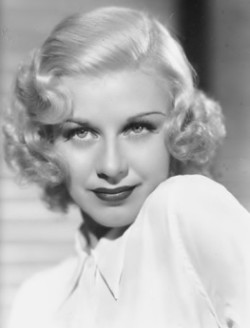 Ginger Rogers will forever be known as the dancing partner of Fred Astaire; they fit together. Together they made some of the greatest film musicals of all time. She could manage the steps, as well as both the sophisticated and common attitudes needed for the comedy and romance. Astaire danced with others who were technically better, but no one who was such a perfect partner. Apart from Astaire she strove to have a “serious” career (after a group of “let’s put on a Broadway show” films) that led to a string of turgid melodramas that she could never pull off—not that anyone could have made Kitty Foyle watchable. Her best “solo” works were comedies.
Ginger Rogers will forever be known as the dancing partner of Fred Astaire; they fit together. Together they made some of the greatest film musicals of all time. She could manage the steps, as well as both the sophisticated and common attitudes needed for the comedy and romance. Astaire danced with others who were technically better, but no one who was such a perfect partner. Apart from Astaire she strove to have a “serious” career (after a group of “let’s put on a Broadway show” films) that led to a string of turgid melodramas that she could never pull off—not that anyone could have made Kitty Foyle watchable. Her best “solo” works were comedies.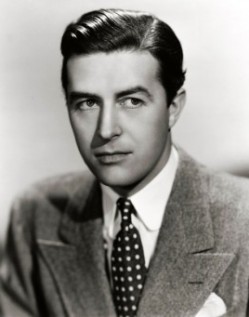 Handsome and debonair, Milland’s early career was mainly in romantic comedies and light action films. His big break came with The Jungle Princess (1936), which made Dorothy Lamour a star as The Sarong Girl. His reputation changed with The Lost Weekend (1945) which won multiple Oscars, but is hard to view as anything other than suffering-porn now—it lacks a plot and an ending. It was no doubt important for people who never realized that alcoholism was bad. But this did alert Hollywood to his skill as a serious actor.
Handsome and debonair, Milland’s early career was mainly in romantic comedies and light action films. His big break came with The Jungle Princess (1936), which made Dorothy Lamour a star as The Sarong Girl. His reputation changed with The Lost Weekend (1945) which won multiple Oscars, but is hard to view as anything other than suffering-porn now—it lacks a plot and an ending. It was no doubt important for people who never realized that alcoholism was bad. But this did alert Hollywood to his skill as a serious actor.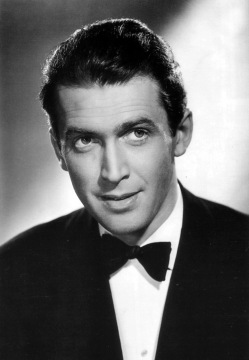 Stewart had a more varied career than most actors and far more than most leading men of the golden age. He not only was in, but was known for, comedies, dramas, melodramas, family films, romances, thrillers, and Westerns. Early in his career, he was in a string of sentimental Frank Capra movies, with It’s A Wonderful Life being the most famous. I’m not a fan of these as they tend to go over the top with shmaltz, letting both real human interaction and humor die for the sake of sentimentality. The worst offender is You Can’t Take It with You, a wonderful play that is gutted by Capra. Luckily, Stewart had other moments, with strong turns in comedies before becoming one of Hitchcock’s two favorites (
Stewart had a more varied career than most actors and far more than most leading men of the golden age. He not only was in, but was known for, comedies, dramas, melodramas, family films, romances, thrillers, and Westerns. Early in his career, he was in a string of sentimental Frank Capra movies, with It’s A Wonderful Life being the most famous. I’m not a fan of these as they tend to go over the top with shmaltz, letting both real human interaction and humor die for the sake of sentimentality. The worst offender is You Can’t Take It with You, a wonderful play that is gutted by Capra. Luckily, Stewart had other moments, with strong turns in comedies before becoming one of Hitchcock’s two favorites (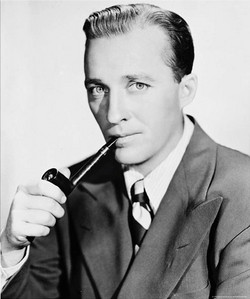 Some lists are hard. Some are easy. And some are pretty much repeats. This one is a
Some lists are hard. Some are easy. And some are pretty much repeats. This one is a 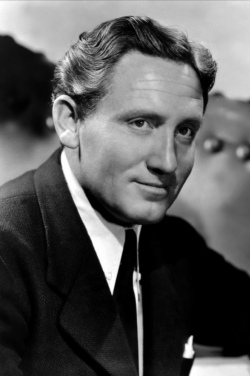 With his no-nonsense, man’s man persona and natural style, Spencer Tracy was successful in both dramas and comedies. Although he was an alcoholic, he was known for his professionalism. It was with that understanding of addiction that he helped a broken Montgomery Clift give his great performance in Judgment at Nuremberg.
With his no-nonsense, man’s man persona and natural style, Spencer Tracy was successful in both dramas and comedies. Although he was an alcoholic, he was known for his professionalism. It was with that understanding of addiction that he helped a broken Montgomery Clift give his great performance in Judgment at Nuremberg. I think of Rex Harrison as one of the great actors, yet “great” is not a word I use with his most famous films. Doctor Dolittle, Anna and the King of Siam, The Agony and the Ecstasy, The Yellow Rolls-Royce, and Cleopatra are all fine, watchable flicks, but no masterpieces, and I normally don’t even call them good without some kind of qualification. (My Fair Lady is a level up, but I still qualify any compliments I give it.)
I think of Rex Harrison as one of the great actors, yet “great” is not a word I use with his most famous films. Doctor Dolittle, Anna and the King of Siam, The Agony and the Ecstasy, The Yellow Rolls-Royce, and Cleopatra are all fine, watchable flicks, but no masterpieces, and I normally don’t even call them good without some kind of qualification. (My Fair Lady is a level up, but I still qualify any compliments I give it.) Edward G. Robinson was one of the kings of early gangster cinema (along with Jimmy Cagney, George Raft, and their second banana, Humphrey Bogart).Things changed in a decade, with old-style crime movies fading, replaced by war movies and
Edward G. Robinson was one of the kings of early gangster cinema (along with Jimmy Cagney, George Raft, and their second banana, Humphrey Bogart).Things changed in a decade, with old-style crime movies fading, replaced by war movies and  The 4th of the Big Three horror icons (of sound films), like Karloff before him, Vincent Price had a liquid-jeweled voice and range. Price’s early work was more often in
The 4th of the Big Three horror icons (of sound films), like Karloff before him, Vincent Price had a liquid-jeweled voice and range. Price’s early work was more often in  The second of the Big Three horror icons (
The second of the Big Three horror icons ( Lugosi had a presence, a charisma, that shaped scenes and entire films. Was he a good actor? It’s hard to say. He wasn’t really given a chance. With his thick accent and less-than-perfect English, his roles were going to be limited. Add in the tendency to pigeonhole horror actors and his own poor choices, and he ended up with a troubled career. But he had a few moments, and those have made him an icon.
Lugosi had a presence, a charisma, that shaped scenes and entire films. Was he a good actor? It’s hard to say. He wasn’t really given a chance. With his thick accent and less-than-perfect English, his roles were going to be limited. Add in the tendency to pigeonhole horror actors and his own poor choices, and he ended up with a troubled career. But he had a few moments, and those have made him an icon. When I was a child in the ‘60s, Stanwyck was known primarily as a television Western star. But time is not kind to TV shows in general and particularly not to Westerns, so that work is fading from cultural memory, which is for the best in this case as she should be remembered first as a film actress.
When I was a child in the ‘60s, Stanwyck was known primarily as a television Western star. But time is not kind to TV shows in general and particularly not to Westerns, so that work is fading from cultural memory, which is for the best in this case as she should be remembered first as a film actress.